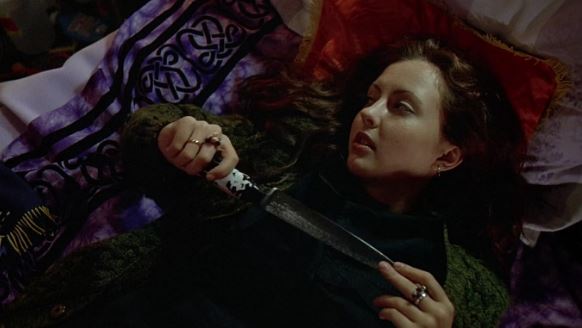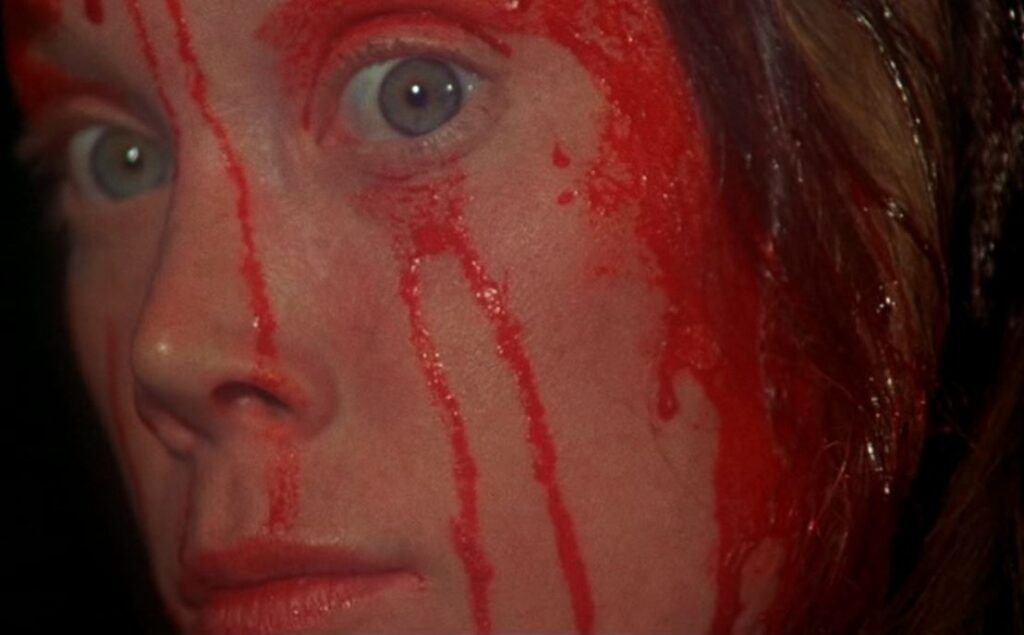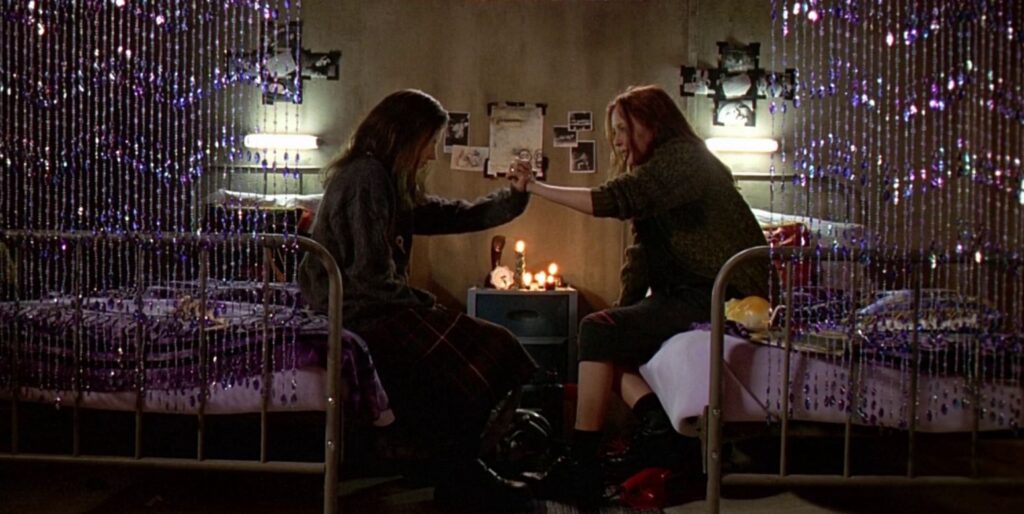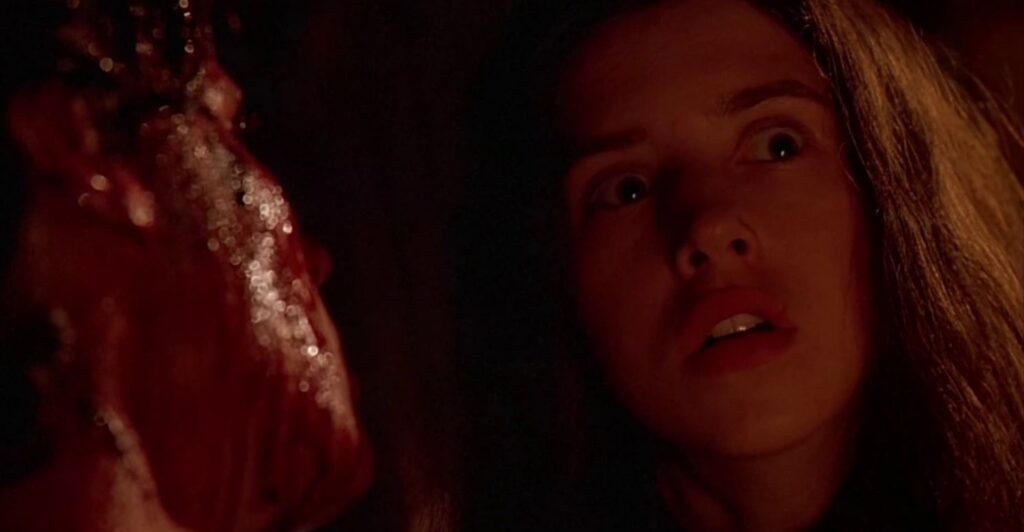Possessed by Puberty: Dissecting the Monstrous Feminine

“In order to enter the symbolic order, the subject must reject or repress all forms of behaviour, speech and modes of being regarded as unacceptable, improper or unclean” — Barbara Creed
Within nearly every subcategory of the horror genre, women fulfill a unique role as both villain and victim. Barbara Creed, a feminist film theorist with her work focusing on the horror genre, has identified several character archetypes. Women are thus deemed virtuous or monstrous by the viewer through the lens of patriarchal ideology.
In her 1993 book, “The Monstrous- Feminine,” Creed identifies the possessed woman as an archetype crucial to the understanding of horror films through a feminist lens. Creed also borrows from Julia Kristeva’s essay on abjection featured in “Powers of Horror.” Kristeva’s theory directly influenced Creed’s concept of the possessed woman, providing an explanation for extreme human behavior when faced with a blurred identity that conflates the self and the “other.”
The possessed woman is characterized by the monstrosity of her biology. Whether that be represented by pregnancy, menstruation, or something as simple as the depiction of female genitals, the possession is ultimately rendered as a shameful defect. This trope is examined in films such as Stephen King’s “Carrie” (1976), in which the source of her monstrosity is her first period. Menstruation is treated as sinful despite its universality. This physiological change signifies more than just the beginning of puberty. It represents the evolution of one’s social status as they reach the end of their childhood.

A loss of boundaries, both mental and physical, are another key characteristic. Other horror films, including “The Exorcist” (1973) and “Psycho” (1960), portray the possession of a female body by a demonic male personality. These characters are hard to describe as anything less than vulgar. They defy all of the behaviors that are expected of women, such as being clean cut and polite. Their sexuality is oftentimes on display. The viewer is expected to peek at these social taboos through their fingers. The Jekyll and Hyde-esque traits of the possessed woman are what differentiate her from stereotypical female characters deemed “monstrous” because of their raging hormones.
“Ginger Snaps” (2000) is a Canadian film that explores possession through the window of lycanthropy. Ginger and Brigitte are sisters who share a deep interdependence and a fascination with the macabre. In their small town, a series of maulings by a mysterious creature take place. Ginger is unconcerned with the dangers until she is attacked by a werewolf drawn to the scent of her first period. Her body begins to change in grotesque ways, alienating her from the prepubescent Brigitte. Ginger sprouts peculiar body hair, suffers from intense mood swings and develops an intense, animalistic libido.
The once inseparable sisters are torn apart as Ginger is overtaken by primal instincts. Brigitte grows desperate to cure her sister of the infection. She attempts to create an antidote from wolfsbane, but her efforts are proven to be for naught after having no choice but to kill a fully transformed Ginger in an act of self defense. Though satirical in nature, “Ginger Snaps” is elevated by its emotional core. Its depiction of teenage girls is raw and emphatic. Ginger and Brigitte are deeply flawed, yet they represent one of the most authentic portrayals of the weird, uncomfortable and socially unacceptable aspects of adolescence.
“Ginger Snaps” is messy. It leans into the most confusing parts of girlhood with a degree of care that is almost never reserved for socially outcast young women. While the film’s use of metaphor is illustrated with a heavy hand, the value of its message is never understated. The possessed woman is not an abject monster simply because of her femininity or sexuality. Rather, her monstrous characteristics are decided by outsiders as a means of weaponizing shame.

The film’s emphasis on a woman’s first period, or menarche, is particularly compelling from the perspective of feminist critique. Ginger refers to her period as “the curse.” She and Brigitte are disgusted and disappointed by this development as if it is not an unavoidable facet of life for the majority of girls and women. Various cultures treat menarche as a significant event in a young woman’s life, many of which plan special rituals for the occasion. It is both a physical and spiritual rite of passage.
Ginger and Brigitte’s disdain for their anatomy is reflected by centuries of global stigma. For example, girls living in regions across Asia and Africa often miss school on their periods due to limited access to sanitary products, a lack of privacy and embarrassment over their bodies. Seclusion is a key experience for many adolescent girls facing menstrual taboos. They are often separated from the men within their communities and may be expected to undergo purification rituals that free them of supernatural uncleanliness. Some tribal cultures indigenous to the Americas participate in similar traditions, erecting menstruation huts for women to return to every cycle until menopause.
Even before her transformation, Ginger and her sister were still rejected by their community. They wear grunge-inspired clothing and are surrounded by a soundtrack filled with metal and alternative rock. The voyeuristic tendencies of teenage boys at their high school are sources of disgust. However, it is the werewolf transformation that compels Ginger to embrace this negative attention. She becomes vicious and domineering in her sexuality, encompassing the most dangerous aspects of a traditionally male personality.

The first and final scenes which feature Ginger and Brigitte take place in their bedroom. In the beginning of the film, both sisters vow to stay together forever. It does not matter whether they end up somewhere far away from their suburban hellscape or six feet underground. It is this vow that makes Ginger’s death so impactful.
Once she is fully transformed, Ginger corners Brigitte in their room. The infection which possesses Ginger’s brain and body metamorphs her into nothing but a host for an aggressive, virile, masculine beast. Brigitte attempts to talk her sister down, allowing enough time for Ginger to come to her senses, as she hopes. She holds a knife in one hand, the wolfsbane antidote in the other, but ultimately chooses to plunge the knife into Ginger.
Brigitte’s acceptance of the end of their once unbreakable familial bond represents an understanding of the greater societal gender roles in play. Even if she were to cure Ginger of lycanthropy, she will forever be guilty of transgression. No amount of social currency could outweigh the violence and promiscuity that engulfed her adolescence. The penetration of the knife into Ginger’s flesh is a cathartic release from these social constructs that constrict every woman’s behavior.

“Ginger Snaps” is available to stream on several platforms, including Peacock, Tubi and Amazon Prime Video.
